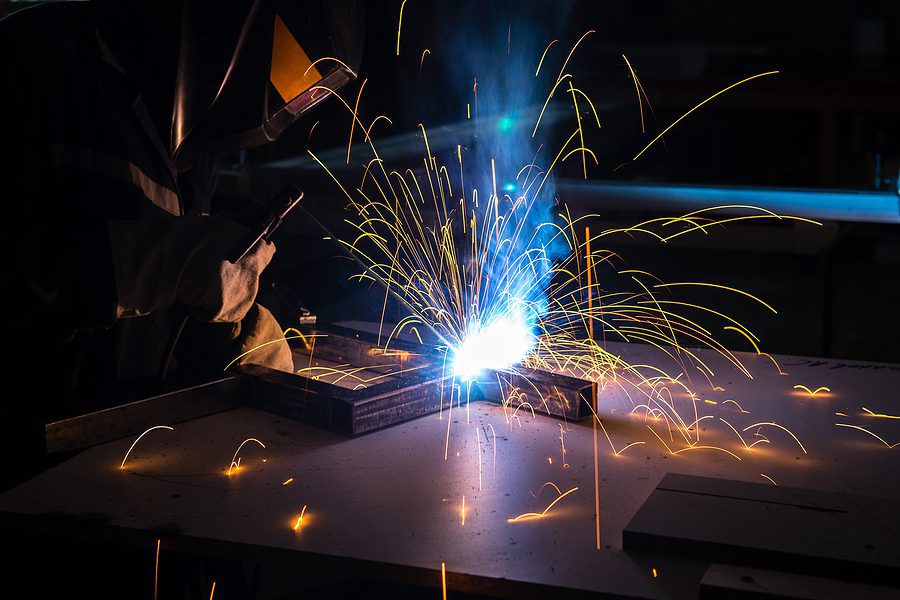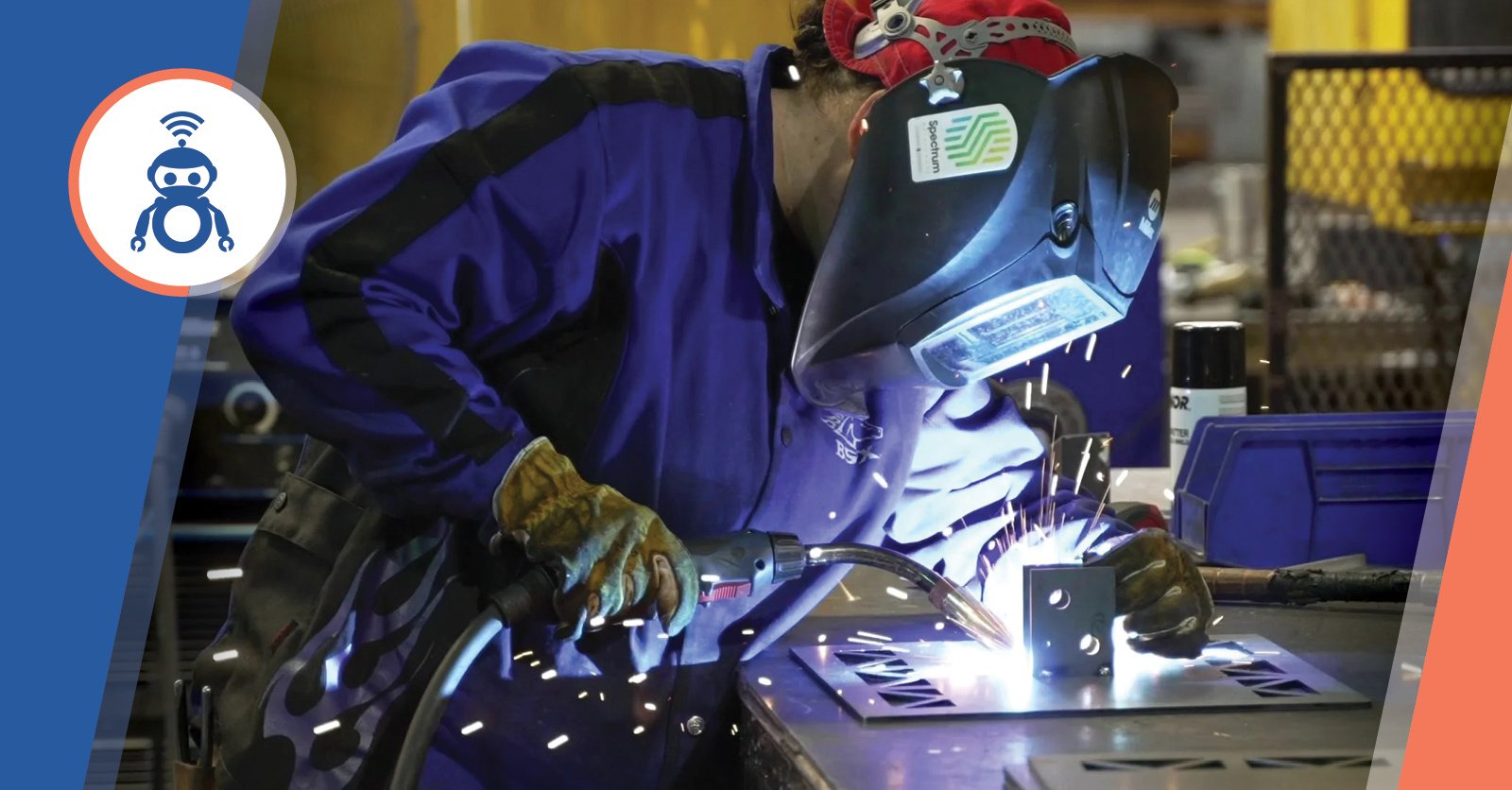Everything about Welding: Secret Insights Into Techniques and Finest Practices for Success
Welding encompasses a range of techniques, each fit for particular materials and applications. Understanding these approaches, such as GMAW, SMAW, and TIG, is necessary for accomplishing ideal outcomes. Additionally, the ideal tools and safety methods can not be neglected. As prep work and troubleshooting play vital functions in the welding procedure, understanding these components can considerably boost the quality of the end product. What are the crucial variables that guarantee a successful weld?
Comprehending Different Welding Methods
Welding strategies encompass a variety of techniques, each suited to particular applications and products. Among one of the most common methods are Gas Metal Arc Welding (GMAW), Shielded Metal Arc Welding (SMAW), and Tungsten Inert Gas Welding (TIG) GMAW, also called MIG welding, is preferred for its rate and versatility, making it optimal for slim products. SMAW, or stick welding, is favored for its simpleness and effectiveness in exterior settings, particularly with thicker metals. TIG welding supplies accuracy and control, making it appropriate for complex job and non-ferrous steels (Fabrication). Each technique has its one-of-a-kind benefits and factors to consider, allowing welders to pick the best method based upon the task's demands, product kind, and wanted results. Understanding these strategies is crucial for effective welding
Vital Welding Equipment and Tools
While numerous welding strategies call for certain skills, the best equipment and devices are equally important for attaining quality outcomes. Necessary welding devices includes welding makers, which differ depending upon the technique-- such as MIG, TIG, or stick welding. Protective gear, consisting of handwear covers, aprons, and helmets, guarantees safety and security and convenience throughout the procedure. Furthermore, components and clamps aid safeguard materials in position, making sure accuracy in welds. Consumables like welding rods, cable, and protecting gas are additionally crucial parts that influence the high quality of the weld. Moreover, tools such as cutters and grinders assist in surface area preparation and post-weld completing, adding to a professional outcome. Purchasing high-quality devices inevitably improves the performance and effectiveness of welding projects.
Safety Practices in Welding
Correct safety and security practices are crucial in the welding industry to secure workers from prospective threats. Welders must wear suitable personal safety tools (PPE), including helmets with correct shading, handwear covers, and flame-resistant apparel. Adequate ventilation is crucial to lower exposure to unsafe fumes and gases produced during the welding process. Additionally, employees must be learnt the proper handling of welding tools to avoid accidents. Fire safety steps, such as keeping flammable materials away from the welding area and having fire extinguishers readily available, are required. Regular assessments of equipment and work areas can aid recognize prospective risks before they result in crashes. By adhering to these safety techniques, welders can produce a more secure working atmosphere and minimize threats associated with their trade.
Readying Materials for Welding
Preparing materials for welding is a vital step that significantly influences the top quality and honesty of the end product (Montana Mobile Welding and Repair). Appropriate preparation entails cleaning up the surface areas to remove pollutants such as corrosion, dirt, and oil, which can endanger the weld. Techniques such as grinding, fining sand, or utilizing solvents are commonly used to accomplish a clean surface area. Furthermore, guaranteeing that the products fit with each other well is vital; voids can lead to weak welds. It's also crucial to think about the placement and positioning of the elements, as this will certainly affect the simplicity of welding and the last outcome. Ultimately, selecting the suitable filler product and guaranteeing compatibility with the base steels is necessary for attaining strong, durable welds
Tips for Getting High-Quality Welds
Attaining high-grade welds calls for interest to detail and adherence to best practices throughout the welding procedure. Correct joint preparation is vital, making certain surface areas are complimentary and clean from contaminants. Choosing the suitable filler material and welding technique based upon the base metals is crucial for excellent bonding. Preserving consistent traveling rate and angle while welding can prevent issues and promote uniformity. Furthermore, managing warmth input is important; excessive heat can cause bending and weakened joints. If needed, routinely checking the welds during the procedure permits for instant modifications. Employing suitable post-weld therapies, such as cleansing and tension relief, can enhance the toughness and stability of the weld, eventually guaranteeing an effective end result.
Troubleshooting Typical Welding Issues
Welding frequently presents obstacles that can affect the quality and honesty of the final product. Usual issues such as porosity, inconsistent weld beads, and getting too hot can emerge, each needing specific troubleshooting techniques. Comprehending these troubles is vital for welders to enhance their abilities and achieve suitable outcomes.
Porosity Problems Clarified
Porosity can commonly be forgotten, it stays a critical problem in welding that can endanger the integrity of an ended up item. Porosity describes the existence of little gas pockets within the weld bead, which can compromise the joint and lead to premature failure. This trouble normally occurs from contaminants, wetness, or incorrect protecting gas coverage throughout the welding procedure. To mitigate porosity, welders must confirm that the base products are completely dry and tidy, make use of proper securing gases, and keep regular welding specifications. Regularly checking the tools and setting can also assist identify possible problems prior to they manifest in the weld. Dealing with porosity effectively is essential for accomplishing strong, durable welds that fulfill top quality requirements.

Inconsistent Weld Beans
Inconsistent weld grains can considerably influence the quality and strength of a completed item. Numerous factors add to this problem, including improper travel speed, incorrect amperage setups, and inconsistent electrode angles. When the welder relocates as well rapidly, a grain might appear slim and do not have infiltration, while moving also gradually can cause extreme accumulation. Furthermore, using the wrong amperage can lead to either undercutting or excessive spatter, both of which compromise weld honesty. The welder's method, such as inconsistent lantern activity, can likewise result in unequal grain appearance. To mitigate these problems, welders must concentrate on preserving stable, regulated movements and making certain correct tools settings to accomplish harmony in their welds. Consistency is essential to achieving reliable and solid welds.
Getting Too Hot and Warping Issues
Extreme warm during the welding process can result in significant getting too hot and contorting problems, affecting the architectural stability of the work surface. These problems often materialize as distortion, which can compromise positioning and fit-up, making further assembly testing. Aspects adding to overheating include the option of welding specifications, such as voltage and take a trip speed, in addition to the kind of material being welded. To mitigate these concerns, welders must preserve regular thoriated traveling speed and appropriate warmth input while checking the work surface temperature. In addition, preheating or post-weld warm therapy can help ease tensions brought on by quick cooling - Welding. Normal inspection and adherence to finest techniques are necessary in preventing getting too hot and ensuring the durability and dependability of welded structures
Often Asked Inquiries
What Are the Career Opportunities in the Welding Industry?
The welding market uses diverse profession chances, consisting of settings as welders, teachers, engineers, and examiners. Specialists can work in production, building and construction, aerospace, and automotive fields, benefiting from solid demand and affordable incomes in various duties.
Just How Can I Enhance My Welding Speed Without Compromising High Quality?
To boost welding rate without sacrificing top quality, one must exercise effective methods, preserve equipment, maximize settings, and boost hand-eye control. Regular training and looking for responses can additionally considerably contribute to accomplishing quicker, top notch welds.
What Qualifications Are Available for Welders?
Various certifications exist for welders, including those from the American Welding Society (AWS), the National Facility for Building And Construction Education And Learning and Study (NCCER), and different industry-specific companies. These credentials enhance employability and show skill proficiency.
How Does Welding Impact the Qualities of Metals?
Welding affects the residential or commercial properties of steels by altering their microstructure, which can bring about modifications in strength, ductility, and hardness. Warmth input and air conditioning rates during the process greatly influence these product attributes.
Can I Weld Dissimilar Metals Together?
